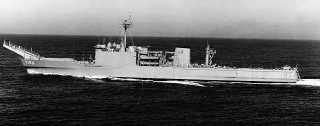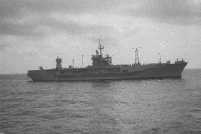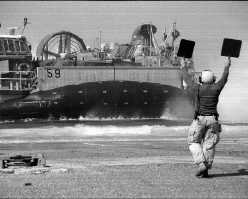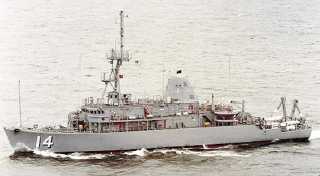command and control for major amphibious operations.
With the latest command and control facilities
available, these ships have become fleet flagships. They
are capable of supporting a naval amphibious task force,
a landing force, and an air force simultaneously.
Mine Warfare Ships.—Mine countermeasures
ships (MCM) are ships designed to clear mines from
vital waterways. In the early 1980s, the U.S. Navy
began development of a new mine countermeasures
(MCM) force, which included two new classes of ships
and minesweeping helicopters. The Iran-Iraq war and
Operation Desert Shield/Desert Storm showed the
importance of a state-of-the-art mine countermeasures
force when the Avenger (MCM 1) and Guardian (MCM
5) ships conducted MCM operations.
Avenger class ships are designed as mine
hunter-killers capable of finding, classifying, and
destroying moored and bottom mines. These ships use
sonar and video systems, cable cutters, and a
mine-detonating device that can be released and
detonated by remote control. They are also capable of
conventional sweeping measures. The ships are of
fiberglass sheathed, wooden hull construction. They are
the first large mine countermeasures ships built in the
United States in nearly 27 years. (See fig. 8-31.)
Osprey (MHC 51) class ships are also designed as
mine hunter-killers. The MHC 51 has a 15-day
endurance and depends on a support ship or shore-based
facilities for resupply. Ships under this class are named
after birds.
REVIEW 4 QUESTIONS
Q1. List the four categories of ships.
a.
b.
c.
d.
Q2. List the six classes of warships.
8-25
Figure 8-29.—USS LA Moure County (LST 1194).
Photograph courtesy of PH2 John Sokolowski
Figure 8-30.—USS Mount Whitney (LCC-20).
Student Notes:
Photograph courtesy of SGT Don L. Mayes
Figure 8-28.—Landing craft air cushion (LCAC).
Figure 8-31.—USS Chief.







